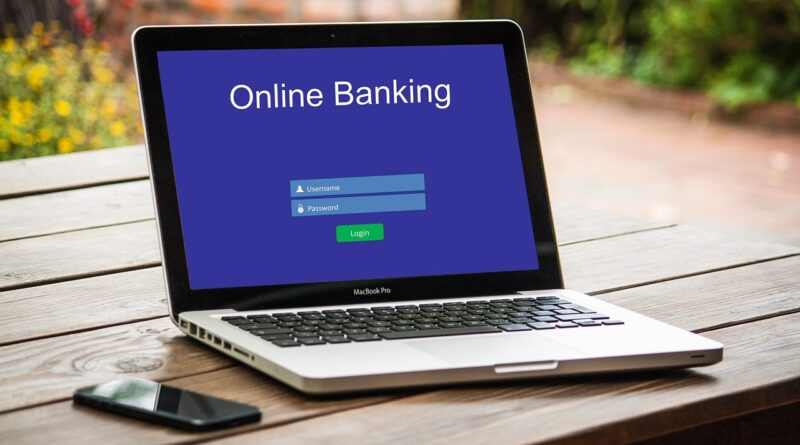Navigating the World of Online Banking
Navigating the World of Online Banking. The digital revolution has significantly transformed how we manage money. Online banking, once a niche service offered by a handful of tech-savvy institutions, is now a mainstream financial practice embraced globally. Today, almost every bank offers online services, allowing customers to check balances, pay bills, transfer funds, and manage investments from the comfort of their homes or on the go. Understanding how to navigate online banking, with its myriad advantages and challenges, is essential for anyone seeking to streamline their financial life.
This guide delves into the benefits, potential risks, tools, and strategies for using online banking effectively, highlighting the key considerations for newcomers and seasoned users alike.
1. The Evolution of Online Banking
Online banking started in the 1990s as a service offered by a few innovative financial institutions. Initially, its functionality was limited to simple tasks like checking account balances or transaction histories. Over time, as internet accessibility expanded and technology advanced, online banking evolved into a comprehensive platform that includes nearly all of the services available in traditional bank branches. Today, millions of people worldwide rely on online banking for everything from basic transactions to investment management.
2. Key Features of Online Banking
Modern online banking platforms offer a broad range of services, designed to provide convenience, efficiency, and security. Some of the most common features include:
- Account Monitoring: Users can check their account balances, view transaction histories, and monitor for suspicious activity in real-time.
- Fund Transfers: Most online banking services allow users to transfer money between accounts at the same bank or even to external bank accounts, both domestically and internationally.
- Bill Payments: Online bill pay options let customers schedule automatic payments to creditors, utilities, and other service providers, ensuring timely payments without the need for paper checks.
- Mobile Check Deposits: Many banks allow users to deposit checks by taking a picture of the check using their smartphone camera.
- Loan Applications: Customers can apply for loans or credit cards online, often receiving decisions quickly based on automated algorithms.
- Investment Management: Some banks offer tools for buying stocks, managing retirement accounts, or creating savings plans directly from their online platforms.
- Customer Support: Online banking platforms often integrate chatbots or live customer service representatives, available 24/7 for immediate assistance.
3. Benefits of Online Banking
Convenience is arguably the greatest benefit of online banking. Customers can manage their finances without the need to visit a physical branch, providing flexibility for those with busy schedules or who live far from a bank.
Time Efficiency: Online banking allows users to perform transactions instantly. Whether it’s transferring funds or paying bills, actions that once required in-person visits or mailed checks can now be completed in a matter of minutes.
24/7 Accessibility: Traditional banking hours don’t apply to online banking. You can access your accounts and perform transactions at any time, making it ideal for people with irregular schedules.
Cost Savings: Many online banks charge lower fees compared to traditional banks because they don’t need to maintain brick-and-mortar branches. Some even offer higher interest rates on savings accounts as an incentive for using their services.
Real-Time Monitoring: With online banking, you can keep a close eye on your accounts. This makes it easier to detect fraudulent activity, manage budgets, and stay on top of your financial goals.
Environmentally Friendly: Online banking eliminates much of the paper waste associated with traditional banking. Statements, checks, and bills are all processed electronically, reducing the need for physical documentation.

4. Risks and Challenges of Online Banking
Despite its many advantages, online banking also presents some risks and challenges that users need to be aware of.
Security Concerns
Cybersecurity is the most prominent concern for online banking. While banks employ sophisticated encryption technology to protect their platforms, no system is entirely immune to hackers. Phishing scams, where fraudsters trick users into revealing login credentials, are a particular threat. Furthermore, using public or unsecured Wi-Fi to access online banking increases the risk of your personal data being intercepted.
Limited Personal Interaction
For customers who prefer face-to-face interactions, online banking may feel impersonal. Although some services offer chatbots or customer service representatives, the personal touch of a banker who knows your history and can offer advice may be missed.
Technical Glitches
Like all digital platforms, online banking systems are not immune to technical issues. Temporary outages or slow processing times can occur, which might prevent you from completing urgent transactions.
5. How to Ensure Safe Online Banking
While risks exist, you can significantly reduce the chances of falling victim to online fraud by adopting safe practices.
- Strong Passwords: Create a complex password that includes letters, numbers, and symbols. Avoid using easily guessed information like birthdates or names.
- Two-Factor Authentication (2FA): Most online banks offer 2FA, which requires an additional verification step (such as a code sent to your phone) before granting access to your account. Enable this feature for added security.
- Regular Account Monitoring: Frequently check your account activity to catch unauthorized transactions early. Many banks allow you to set up alerts that notify you of suspicious activity.
- Avoid Public Wi-Fi: Never access your bank accounts over public Wi-Fi networks, as these are more vulnerable to hacking. If necessary, use a virtual private network (VPN) for a secure connection.
- Recognize Phishing Attempts: Be skeptical of emails or text messages asking for your personal information, even if they seem to come from your bank. Always log in directly through the bank’s website rather than clicking on links in unsolicited communications.
- Keep Software Updated: Ensure your devices and browsers are up to date with the latest security patches. Cybercriminals often exploit vulnerabilities in outdated software.
6. Choosing the Right Online Bank
Selecting the right online bank depends on your specific needs. Here are some key factors to consider:
Fees and Charges
Compare the fees for services such as ATM withdrawals, overdraft protection, and monthly maintenance. Many online banks offer free checking or savings accounts with no monthly fees, which can be a significant advantage over traditional banks.
Interest Rates
Online banks often provide higher interest rates on savings accounts and CDs due to lower overhead costs. Compare the rates across multiple institutions to ensure you’re getting the best deal.
Customer Support
Since you won’t be visiting a physical branch, customer support is crucial. Make sure the bank offers reliable 24/7 service through various channels, including phone, email, or chat.
ATM Access
If you still need access to cash, check whether the bank provides free ATM access. Many online banks are part of large ATM networks, allowing you to withdraw money without incurring fees.
Financial Products
Consider whether the bank offers a full range of financial products, such as loans, credit cards, and investment options, which might be important as your financial needs evolve.
7. The Future of Online Banking
The future of online banking looks bright, with advancements in artificial intelligence (AI), blockchain technology, and fintech driving new innovations.
- AI and Automation: AI is already being used in online banking for customer service (through chatbots) and fraud detection. In the future, more sophisticated AI tools may offer personalized financial advice, helping customers make smarter investment and budgeting decisions.
- Blockchain and Cryptocurrencies: Blockchain technology offers enhanced security features and faster transaction processing. As cryptocurrencies become more accepted in the financial world, online banks may integrate these options into their platforms, offering new ways to transfer and manage digital assets.
- Mobile Banking: With the rise of smartphones, mobile banking has already surpassed desktop banking in popularity. Future advancements may include more biometric security features (such as fingerprint or facial recognition) and enhanced app functionality, allowing for even greater convenience and control over financial management.
Online banking has revolutionized the way we manage our finances, offering unparalleled convenience, efficiency, and accessibility. By understanding the key features and potential risks, and by taking necessary precautions to ensure safety, users can fully leverage the benefits of digital banking. As technology continues to evolve, the world of online banking will likely become even more advanced, making it an essential part of personal financial management.
For those new to online banking, starting with a trusted, well-established bank that offers robust customer support and security features is crucial. And for seasoned users, staying updated with the latest tools, trends, and security measures will ensure continued success in navigating this digital financial landscape.

